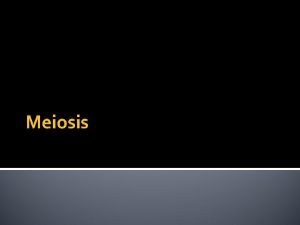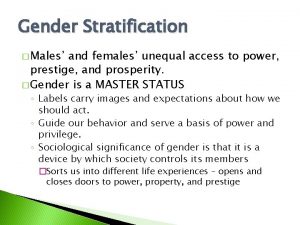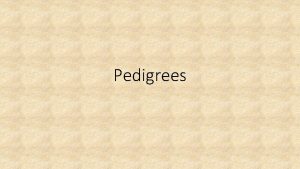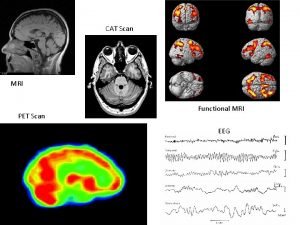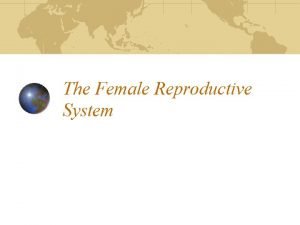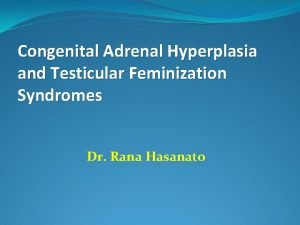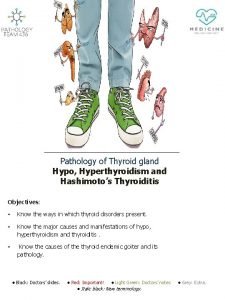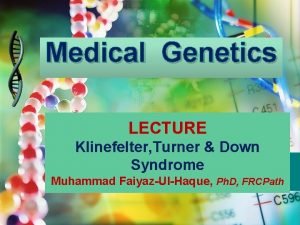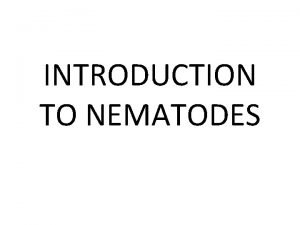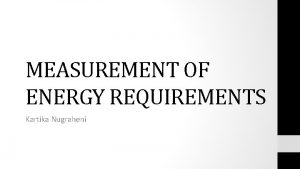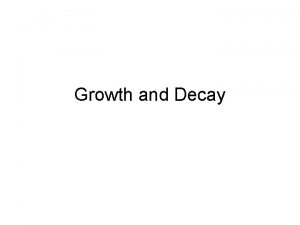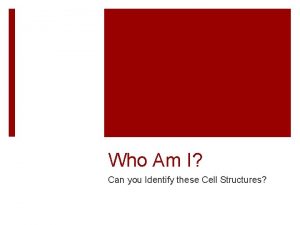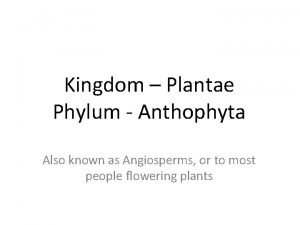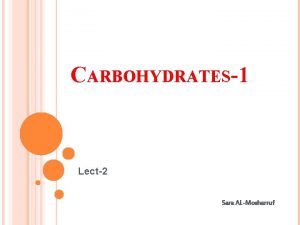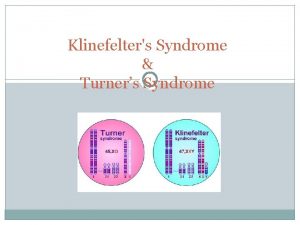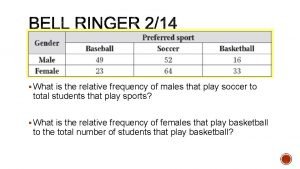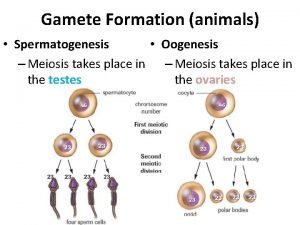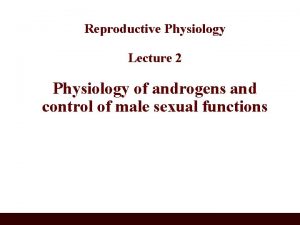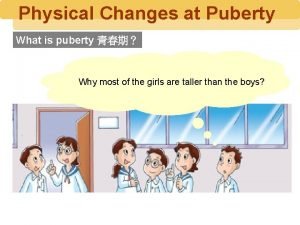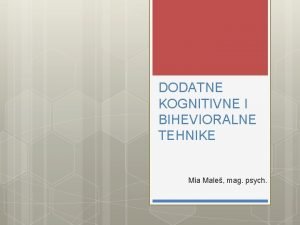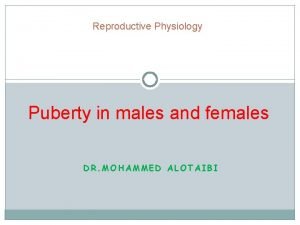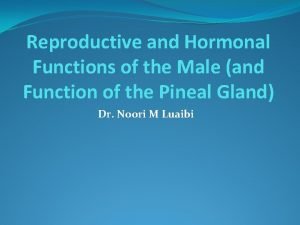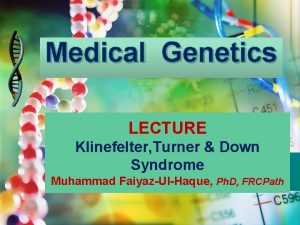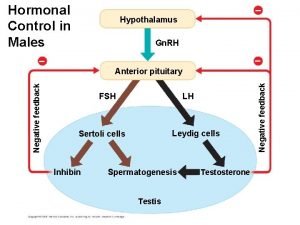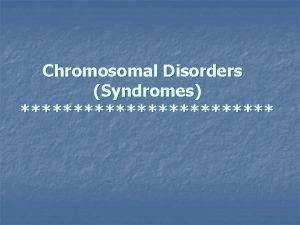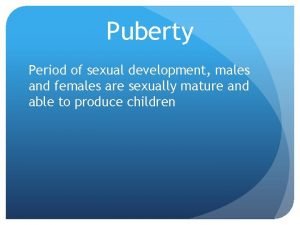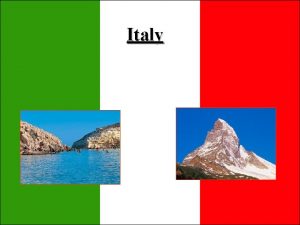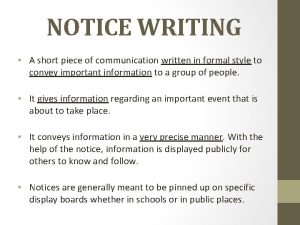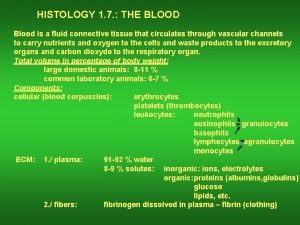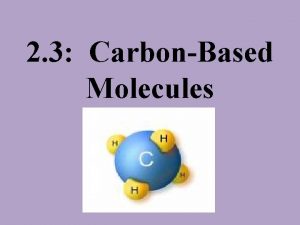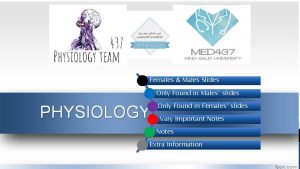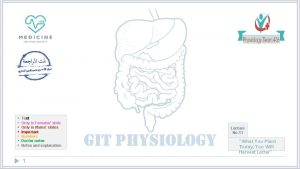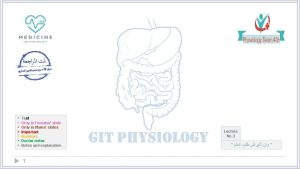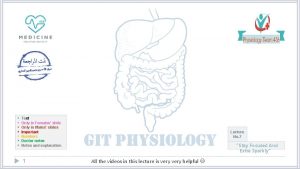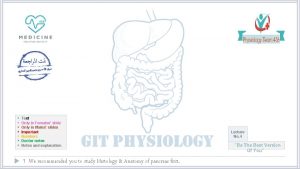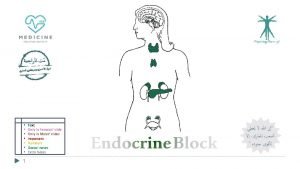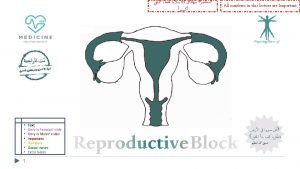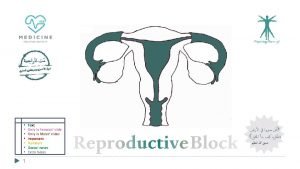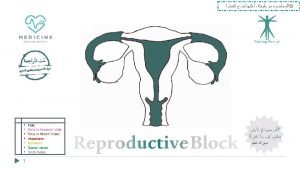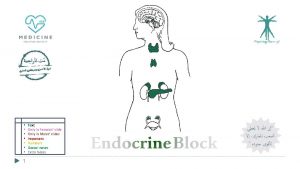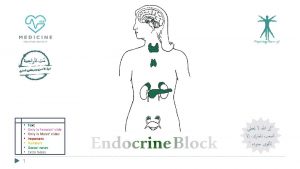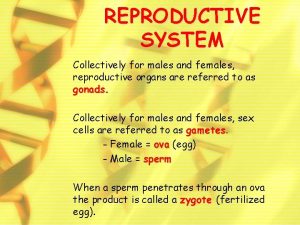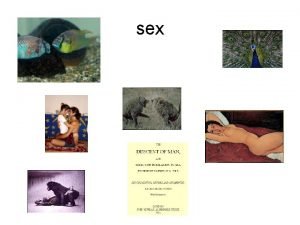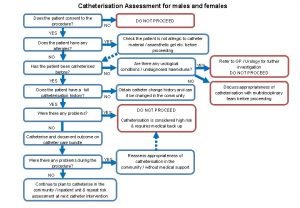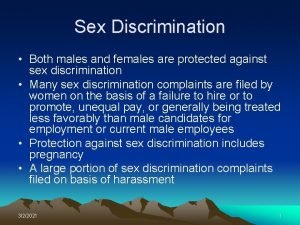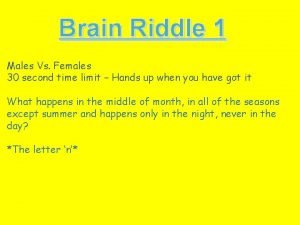Females Males Slides Only Found in Males slides






























![Clinical Manifestations of Hypo- & Hypernatremia Hyponatremia • ↓↓ Plasma [Na+] → ↓↓ECF osmolarity Clinical Manifestations of Hypo- & Hypernatremia Hyponatremia • ↓↓ Plasma [Na+] → ↓↓ECF osmolarity](https://slidetodoc.com/presentation_image_h/1f41ac694df27ee842c7c982a10d8fc5/image-31.jpg)





![Clinical abnormalities of fluid volume regulation hypo- & hypernatremia Plasma Na+ concentration ↑ [Na+] Clinical abnormalities of fluid volume regulation hypo- & hypernatremia Plasma Na+ concentration ↑ [Na+]](https://slidetodoc.com/presentation_image_h/1f41ac694df27ee842c7c982a10d8fc5/image-37.jpg)











- Slides: 48

Females & Males Slides Only Found in Males’ slides PHYSIOLOGY Only Found in Females’ slides Vary Important Notes Extra Information


Objectives • • • List and describe of body fluid compartments as intra‐cellular fluid (ICF), Extra‐cellular fluid (ECF), interstitial fluid, trans‐cellular fluid, and total body water (TBW) and state their normal value. Describe the physiological and pathological factors influencing the body fluid. Identify and describe daily intake and output of water and maintenance of water balance Describe the composition of each fluid compartment, in terms of volume and ions and represent them in graphic forms. State the water content of the body. Discuss water balance in the body with regards to intake and output. Enumerate the different body fluid compartments and state their normal volume. Describe the physiologic mechanisms involved in water balance (the role of ADH hormone and thirst mechanism). Define osmolarity and state the normal osmolarity of body fluids. Explain the effects of placing a cell in solutions with varying tonicity on the cell volume. Enumerate fluids used in clinical practice and state their tonicity compare to that on normal body fluids. Describe the effects of infusing IV fluids with different tonicities on the volume and osmolarity of the different body compartments.

ﻫﺬﻱ ﺍﻟﺴﻼﻳﺪ ﻣﻦ ﺍﻟﺒﻨﺎﺕ Body Fluid Content • Total body fluids ≈ 60% (50 -70%) of total body weight (TBW). • Body fluids = water + dissolved solutes. Electrolytes Solutes • (Na+, K+, Cl-, HCO 3, Mg+2, Ca+2) Nonelectrolytes (glucose, urea, creatinine) Total body water ≈ 60% of TBW. (Guyton and Hall Textbook of Medical Physiology. 13 th ed. Ch-25) 60% Water

Body Water The human body made mainly of water, which constitutes about 60% of body weight in the adult, however the amount of water varies with age. “Increase in age lead to decrease in the percentage of water”

Total Body Fluid • • Total body water (TBW): consititutes 55 -60% of the body weight in young men and 45 -50% in young women. Why the percentage is lower in women? “The percentage of water is lower in women because they have higher fat content than men” The TBW Is distributed as follows: Muscle (50%) Skin (20%) Other organs (20%) Blood (10%) Infants have low body fat, low bone mass, and are 73% or more water.


Water Balance • Cells are largely made of water and are surrounded by a “sea” of water. • Water is constantly being exchanged between the cells and surrounding environment. • Keeping a constant volume of water is essential for homeostasis.

Maintenance of Fluid Balance Daily loss: • Insensible loss (700 ml). Water intake: • Sweat (100 ml). • Fluids ingested (2100 ml). • Feces (100 ml). • From metabolism (200 ml) • Urine (1400 ml). Total intake = 2300 ml Total loss = 2300 ml Insensible loss: ﻭﻫﻮ ﻳﺤﺼﻞ. ﻳﻌﻨﻲ ﺍﻟﻤﺎﺀ ﺍﻟﻠﻲ ﻧﺨﺴﺮﻩ ﻣﻦ ﺃﺠﺴﺎﻣﻨﺎ ﺑﺪﻭﻥ ﺇﺩﺭﺍﻙ ﺃﻮ ﻭﻋﻲ ﻣﻨﻨﺎ : ﺧﻼﻝ 1. Evaporation through the respiratory tract. (breathing) ( )ﺗﺒﺨﺮ ﺍﻟﻤﺎﺀ ﻣﻦ ﺍﻟﺠﻬﺎﺯ ﺍﻟﺘﻨﻔﺴﻲ ﺃﺜﻨﺎﺀ ﻋﻤﻠﻴﺔ ﺍﻟﺘﻨﻔﺲ 2. Diffusion through the skin ( )ﻳﺨﺘﻠﻒ ﻋﻦ ﺍﻟﺘﻌﺮﻕ

Regulation of Fluid Balance Amount ingested = amount eliminated. Modify intake → thirst Major input Modify output→ Kidney excretion Major ouput

Disturbances in Fluid Balance Water/fluid intake • Intake is variable Depends on: – Climate. – Habits. – Physical activity. Water/fluid output -Burns - Exercise -Hot weather. -Diarrhea -Vomiting -Blood loss -Diabetes

Regulation of Fluid Balance Water deficit • Input < output. • Leads to: – Hypovolemia – Dehydration • Physiologic regulation: 1. Activates Hypothalamic Thirst centre → ↑fluid intake • The hypothalamic thirst centre is activated by: – ↓ ECF volume (10 -15%) – ↑ ECF osmolarity (1 -2%) 2. ↑ ADH secretion by posterior pituitary → ↑ water reabsorption by the kidney. Water excess • Input > output • Leads to: – Hypervolemia – Edema. • Physiologic regulation: 1. ↓ ADH secretion → ↓water reabsorption→ ↑water excretion by kidney. 2. Decrease thirst


Body Fluid Compartments Total body water = 60% TBW *2/3 (40% of TBW) Intracellular Transcellular fluid (specialised type of ECF e. g. synovial, CSF, ocular, pericardial, pleural, peritoneal fluids)= 1 -2 L 1/3 (20% of TBW) Extracellular ¼ (5%) ¾ (15%) Interstitial Fluid Plasma N. B. the fractions refer to its relation with the preceding compartment. While the percentage refers to its relation to Total Body Weight) (Guyton and Hall Textbook of Medical Physiology. 13 th ed. ﻫﺬﻱ ﻣﻦ ﺳﻼﻳﺪﺍﺕ ﺍﻟﺒﻨﺎﺕ

Body Fluid Compartment ﻫﺬﻱ ﻣﻦ ﺳﻼﻳﺪﺍﺕ ﺍﻷﻮﻻﺩ The water content of the body is divided into two compartments. 1) Intracellular compartment (ICF) Contained within the cell, represent approximately 67% of the total body water, 40% of total body weight. 2) Extracellular Compartment: (ECF) Contained within the vessels of the cardiovascular system, is the remaining 33% of the total body water, about 20 % of total body weight. the fluid portion of the blood, represents approximately 25% of the ECF. Blood volume, approximately 80 ml/kg of body weight (8%). Plasma sourrounds all cells except blood cells and includes Lymph (2 -3%) of total body weight. The ISF represent approximately 15% of the total body weight and 75% of the ECF. Interstitial fluid (ISF) is about 1 L, occupies approximately 15 ml/kg of body weight (1. 5%). * Represents fluid in the lumen of structures lined by epithelium and includes digestive secretions… etc. Transcellular fluid volume

”intercellular space basically means the space between cells which is in essence The interstitial space (interstitium). While Extracellular comprises both the interstitium And the plasma” Dr. Maha Don’t mix up between Intracelular Fluid ( inside the cell ) and Intercellular fluid (space between cells)

Fluid Compartments

Let’s go back to our 30 -year-old man Calculate the total body water content of a 40 -year-old 70 kg man? • TBW = 42 litres • How many litres lie intracellularly? 42 X ⅔ = 28 L OR 70 X 40/100 = 28 L. • How many litres lie extracellularly? 42 X ⅓ = 14 L OR 70 X 20/100 = 14 L. • How many litres constitute the interstitial fluid? • How many litres are plasma?

COMPOSITION OF BODY FLUIDS v Does the composition of the different body fluid compartments differ? v The major body fluid compartment and membranes separate them 19

Constitutes of extracellular and intracellular fluids: • The plasma and interstitial fluid are separated only by highly permeable capillary membranes, their ionic composition is similar but protein is higher in the plasma. • the intracellular fluid is separated from extracellular fluid by a cell membrane that is highly permeable to water but not to most of the electrolytes in the body.

Solute Overview: Intracellular vs. Extracellular • Ionic composition very different • Total ionic concentration very similar • Total osmotic concentrations virtually identical

Constituents of the Different Body Fluid Compartments


Extracellular and Intracellular Fluids • Ion fluxes are restricted and move selectively by active transport. • Nutrients, respiratory gases, and wastes move Unidirectionally. • Plasma is the only fluid that circulates throughout the body and links external and internal Environments. • Osmolarities of all body fluids are equal; changes in solute concentrations are quickly followed by osmotic changes.

Continuous exchange of Body Fluids

Factors That Affect TBW: Physiological factor: Pathological factors: • Age • Sex • Body fat • Climate • Physical activity • • Vomiting Diarrhea Diseases with excessive loss of water (DM, excessive sweating, etc) Blood loss

Osmolarity vs Tonicity? Osmolarity: • • • A unit of concentration. It measures how concentrated or diluted a solution is. Defined as, the number of osmoles of a solute per litre of solution. The normal osmolarity of body fluids is ≈ 300 m. Osm/L describes the concentration of one solution It is the movement of water across a semi-permeable membrane from a region of low solute concentration to a region of high solute concentration. Tonicity: • Ability of a solution to change the volume or pressure of the cell by osmosis • is used to compare between the osmolarities of two or more solutions separated by a semi-permeable membrane.

Why Is tonicity important? • The difference in tonicity between two different solutions separated by a semi-permeable membrane determines the movement of water. “Water move from low Concentration to high concentration”

Tonicity Isotonic: Hypotonic: Equal tension to plasma. RBCs will not gain or lose H 20. Osmotically active solutes in a lower osmolality and osmotic pressure than plasma. RBC will hemolyse. Hypertonic: Osmotically active solutes in a higher osmolality and osmotic pressure than plasma. RBC will crenate. Isotonic solution Hypertonic solution Interstitial fluid is less concentrated than cytosol. Interstitial fluid is the same concentration as cytosol. No net movement of water. Erythrocyte SEM 11, 550 x SEM 9030 x SEM 6900 x Water leaves cell. Water enters cell. Erythrocyte Normal erythrocytes Interstitial fluid is more concentrated than cytosol. Erythrocytes nearing hemolysis Erythrocytes undergoing crenation

How does it apply to physiology? The cell membrane is a semipermeable membrane (Allows only water to move freely across it) How is it related to patient care? 1. Physicians administer fluids to patients for various reasons that may change the osmolarity of ECF. 2. Abnormalities in electrolytes can change the osmolarity of ECF and can affect the cells a. Hypernatremia (↑ Na conc. In ECF) b. Hyponatremia (↓ Na conc. In ECF) Some factors can cause the change: - dehydration - intravenous infusion (IV) - abnormal sweating. - etc. . • There are many types of IV fluids with different tonicities.
![Clinical Manifestations of Hypo Hypernatremia Hyponatremia Plasma Na ECF osmolarity Clinical Manifestations of Hypo- & Hypernatremia Hyponatremia • ↓↓ Plasma [Na+] → ↓↓ECF osmolarity](https://slidetodoc.com/presentation_image_h/1f41ac694df27ee842c7c982a10d8fc5/image-31.jpg)
Clinical Manifestations of Hypo- & Hypernatremia Hyponatremia • ↓↓ Plasma [Na+] → ↓↓ECF osmolarity causing cells to swell. • Brain cell edema leads to neurologic symptoms; – Headache. – Nausea. – Lethargy & disorientation. • [Na+] < 115 -120 mmol/L → seizures, coma, permanent brain damage & death. Hypernatremia • ↑↑ Plasma [Na+] → ↑↑ ECF osmolarity causing cells to shrink.


Changes in volume ﺳﻼﻳﺪ ﻛﺎﻣﻠﺔ ﻣﻦ ﺍﻷﻮﻻﺩ ﻣﺤﺎﺿﺮﺓ homeostasis 2 Volume contraction (Removing): 1 - isotonic solution. e. g. Diarrhea osmolarity of fluid lost ≈ osmolarity of ECF (loss of isosmotic fluid) volume in ECF. arterial pressure 2 - hypertonic solution. e. g. Water deprivation Osmolarity and volume will change. Osmolarity in both ECF and ICF. Volume in both ECF and ICF. 3 - hypotonic solution. e. g. Adrenal insufficiency i. e. Aldosterone deficiency. Na+ in the ECF. osmolarity in both. in ECF volume. in ICF volume. Volume expansion (Adding): 1 - isotonic solution. e. g. Infusion of isotonic Na. Cl. in ECF volume. No change in osmolarity. (Isomotic expansion) 2 - hypertonic solution. e. g. High Na. Cl intake eating salt. osmolarity in both. volume of ICF. volume of ECF. (hyperosmotic volume expansion) . 3 - hypotonic solution. e. g. Syndrome of inappropriate antidiurtic hormone (SIADH) volume osmolarity

What happens to body fluid compartments in different clinical situations?

What happens to the different compartments with the administration of IV fluids? Adding hypertonic solution • ↑ ECF osmolarity • Water moves out of cells into ECF. • ICF volume decreases. • ECF volume increases. • ↑ ICF osmolarity Adding isotonic solution • No change in ECF osmolarity. cc occurs • No osmosis through cell membrane. • ECF volume increases. Adding hypotonic solution • ↓ ECF osmolarity • Water moves from ECF into ICF. cc • ICF volume increases. • ECF volume increase. • ↓ ICF osmolarity

What happens to the different compartments with the administration of IV fluids? 1 - the concentration of salt decreases so the vertical axis (osmolarity) will decrease 2 - The ECF will move to the ICF and that’s why the cell swelled 1 -The concentration of salt will increase , that’s why vertical axis (osmolarity) will increase 2 - the ICF will move outside to ECF that’s why the cell shrinks
![Clinical abnormalities of fluid volume regulation hypo hypernatremia Plasma Na concentration Na Clinical abnormalities of fluid volume regulation hypo- & hypernatremia Plasma Na+ concentration ↑ [Na+]](https://slidetodoc.com/presentation_image_h/1f41ac694df27ee842c7c982a10d8fc5/image-37.jpg)
Clinical abnormalities of fluid volume regulation hypo- & hypernatremia Plasma Na+ concentration ↑ [Na+] “Hypernatremia” ↓ [Na+] “Hyponatremia” Excess Na+ in ECF Loss of water from ECF Loss of Na+ from ECF Excess water in ECF Excess aldosterone hormone ADH deficiency Water intake less than water loss (excessive sweating) Decreasealdosterone secretion Overuse of diuretics Vomiting & diarrhea Excess ADH (SIADH) Hyponatremia + dehydration Hyponatremia + overhydration Hypernatremia + dehydration

Regulation of fluids and electrolytes: • • Homeostatic mechanisms respond to changes in ECF No receptors directly monitor fluid or electrolyte balance – Respond to changes in plasma volume or osmotic concentrations. – All water moves passively in response to osmotic gradients. – Body content of water or electrolytes rises if intake exceeds outflow. Primary regulatory hormones: • • • Antidiuretic hormone (ADH): – Stimulates water conservation and the thirst center. – Regulates the concentration of body fluid. Aldosterone: – Controls Na+ absorption and K+ loss by kidney. – Regulates the volume of body fluid compartment. Natriuretic peptides: 38 – Reduce thirst and block the release of ADH and aldosterone.

Sodium balance: Potassium balance: • • • Rate of sodium uptake across digestive tract directly proportional to dietary intake Sodium losses occur through urine and perspiration Shifts in sodium balance result in expansion or contraction of ECF Large variations corrected by homeostatic mechanisms • Too low, ADH / aldosterone secreted • Too high, ANP secreted Potassium ion concentrations in ECF are low • Not as closely regulated as sodium • Potassium ion excretion increases as • ECF concentrations rise • Aldosterone secreted • p. H rises • Potassium retention occurs when p. H falls

Calcium balance Bone reserves, absorption in the digestive tract, and loss at kidneys Phosphate balance Absorbed by the PCT in response to calcitriol Magnesium balance Absorbed by the PCT to keep pace with urinary losses Chloride balance Absorbed at digestive tract to balance losses in urine and sweat

What are the feedback mechanisms operating in fluid balance control?

Feedback Mechanisms Controlling Fluid Balance

In summary

Water distribution in the body An exercise • After learning about water content of the human body , a 60 kg medical student was curious to calculate her own body water content. What would you expect the Total volume of her body water to be? 36 L • And what is the volume of the following compartments? -ICF 26 L -ECF 12 L -IF 9 L -Plasma 3 L

Chick your understanding ! 1 - Calculate the total body water content of a 30 year old 60 kg man ? a/ 40 L b/ 25 L c/36 L d/ 33 L 2 - ECFs are constantly mixing and have the same composition except for proteins T/F 3 - Which of the following isn’t physiological factors? a/ blood lose b/age c/sex d/body fat

4 -Which of the following is incorrect: (by adding isotonic solution) a/ No change in ECF Osmolarity. b/ECF volume increases. c/ Osmolarity of ECF increase. 5 -The Osmolarity describe the concentration of two solution T/F 6 - Intracellular compartment represent 33% of the total body water, about 20 % of total body weight T/F

Answers / 1 -c , 2 -T , 3 -a , 4 -c , 5 -F , 6 - F

 Meioss
Meioss The unequal access of males and females to property
The unequal access of males and females to property Generations in a pedigree
Generations in a pedigree Nageeb thought all nurses
Nageeb thought all nurses How many immature eggs are females born with
How many immature eggs are females born with Ffa code of ethics
Ffa code of ethics Gigantism vs acromegaly
Gigantism vs acromegaly Virilisation in females
Virilisation in females Thyroid symptoms in females
Thyroid symptoms in females Klinefelter syndrome
Klinefelter syndrome Puberty
Puberty In nemathelminthis females are
In nemathelminthis females are Harris benedict rumus
Harris benedict rumus Tanner scale for females
Tanner scale for females In 1971 there were 294 105 females
In 1971 there were 294 105 females Fbla attire
Fbla attire Series of tubes found throughout the cell
Series of tubes found throughout the cell Anthophyta reproduction
Anthophyta reproduction Introduction of carbohydrates
Introduction of carbohydrates A small child slides down the four frictionless slides
A small child slides down the four frictionless slides Ball a has half the mass and eight times
Ball a has half the mass and eight times Leave only footprints take only photos
Leave only footprints take only photos Sapsac
Sapsac Kleinfelters
Kleinfelters Extra y chromosome
Extra y chromosome What is the relative frequency for males ?
What is the relative frequency for males ? Hypergonadism in males
Hypergonadism in males Porque me dejaron a mi fuente de agua viva
Porque me dejaron a mi fuente de agua viva Fccla dress code
Fccla dress code Gamete formation
Gamete formation Fritz haarmann childhood
Fritz haarmann childhood Factors affecting spermatogenesis ppt
Factors affecting spermatogenesis ppt Is puberty a physical or chemical change
Is puberty a physical or chemical change Triple x syndrome
Triple x syndrome Måleenhet for spenning
Måleenhet for spenning Mia males
Mia males Puberache
Puberache Spermatogenesis begins in the
Spermatogenesis begins in the Klinefelter syndrome facial features
Klinefelter syndrome facial features Fsh in males
Fsh in males In males, fsh prods these organs to produce testosterone.
In males, fsh prods these organs to produce testosterone. Turner syndrome symptoms
Turner syndrome symptoms Male puberty
Male puberty Italy is found in which continent
Italy is found in which continent Lost purse notice
Lost purse notice Short notice of meeting sample
Short notice of meeting sample Eccentric nucleus histology
Eccentric nucleus histology Protein monomer
Protein monomer While shopping kyla found a dress
While shopping kyla found a dress
